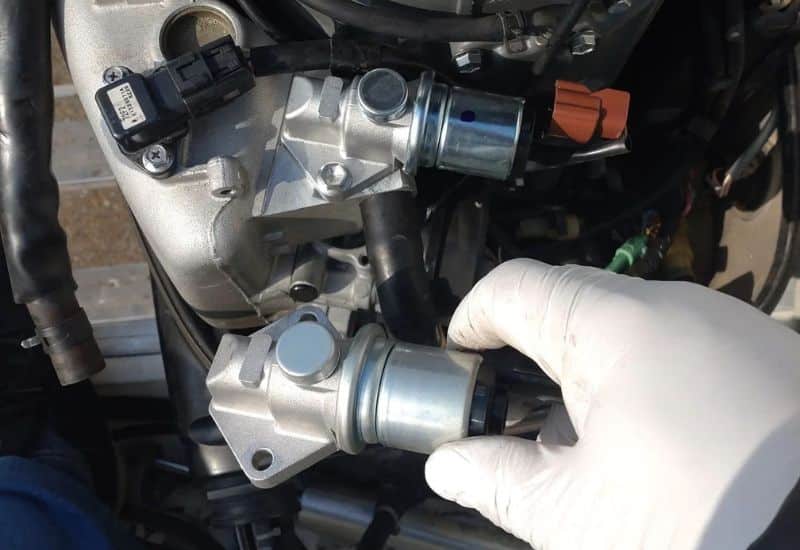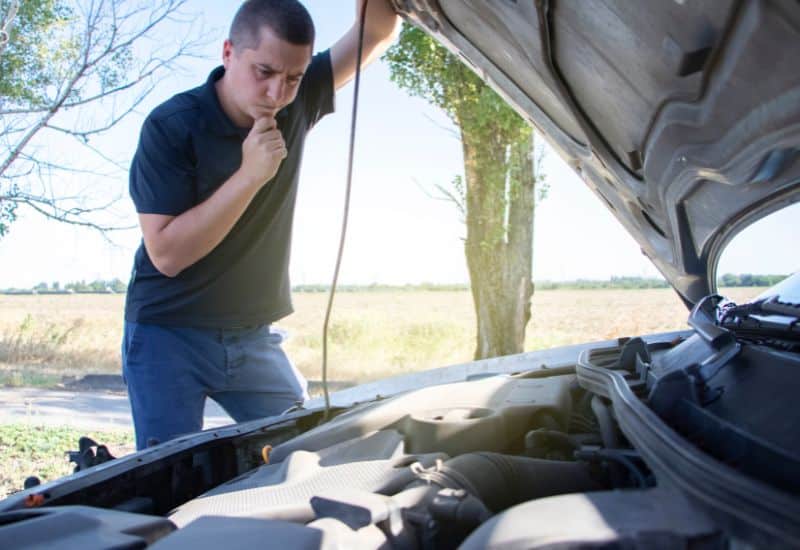
Thirty or forty years ago, a stall at the lights was sort of seen as par for the course for older carbureted engines. Though for today’s modern vehicles with precision ECUs, sensors, and sophisticated fuel injection systems, a car that stalls while idling is often a sign of a more serious problem.
Assuming you can start the car again, you shouldn’t just procrastinate the problem, believing it’s in the rearview mirror. When a car shuts off while idling, it can be caused by a variety of issues, including fouled spark plugs, faulty oxygen or mass airflow sensor, clogged EGR valve or defective idle air control valve.
It seems clear that we’re going to need to delve a little deeper into the engine bay to explore all the reasons why your car is stalling when coming to a stop and what you can do to fix it.
7 Reasons Why Your Car Shuts off When Stopped or Idling and How to Fix Them
The most common reasons why a car will stall at idle usually break down into problems with the air intake, the fuel system, or a faulty sensor that affects the ECU’s ability to regulate the internal combustion process properly.
Within each of these systems, some common culprits are often to blame. This includes problems like:
1. Fouled Spark Plugs
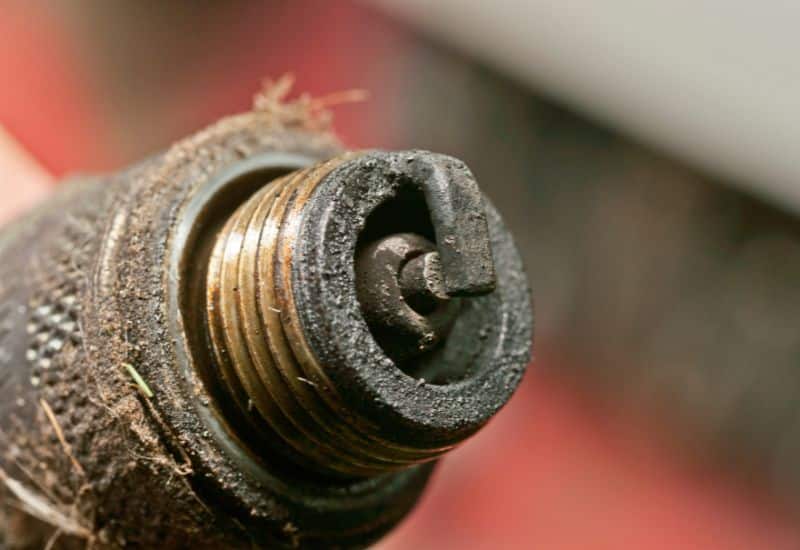
In a properly maintained engine, properly gapped spark plugs are meant to last for 75,000 to 100,000 miles. Though these are engineering specs that rarely ever play out perfectly in the real world.
Problems with the fuel system, excess oil in the combustion chamber, carbon buildup and overheating can all foul spark plugs. Over time fouled plugs don’t fire properly which can lead to symptoms such as:
If it’s just that the spark plugs are fouled, the easiest fix here is simply to replace them with new plugs. Though a lot of times, the problem that caused the spark plugs to go bad, such as a dirty fuel filter, failing sensors, or a coolant system problem will simply recur in a few weeks or months.
So, if you do have fouled spark plugs causing your car to die at idle, you should see replacing them as a band-aid repair that will get you by until you can ferret out the underlying cause.
The cost to replace spark plugs yourself is usually $20 to $25 per plug, not counting essential tools like a torque wrench.
The cost to have a mechanic replace your spark plugs adds an extra $125 to $250 in labor costs.
A full tune-up by a mechanic ranges from $250 to $750.
2. Bad MAF, ECT, or O2 Sensors
Modern-day engines are festooned with sensors, but when a car stalls at idle, the most common culprits are usually a bad MAF, oxygen sensor, or ECT sensor. A problem like this will usually appear on a code reader, making diagnosing it easy.
The Mass Airflow (MAF)
This sensor’s job is to measure the volume of air entering the engine accurately. This information is sent to the ECU, which automatically adjusts the fuel being delivered to the combustion chamber for the ideal fuel/air ratio for combustion. If there’s a fault in your car’s MAF sensor, it typically registers the available air volume as lower than it truly is.
The ECU then adjusts the fuel delivery to inject too little fuel resulting in an overly lean mixture and less than robust combustion. This can cause the engine to stall a rough idle or even potential misfires.
The Oxygen (O2)
This sensor’s job is to measure the volume of unburned oxygen in the exhaust. It transmits that information to the ECU, which adjusts the fuel/air mixture for what it thinks is optimal engine performance.
If the O2 sensor has a fault, it sends incorrect data to the ECU. The fuel/air ratio is then off, which can cause the engine to stops while idling.
Oxygen sensor problems often cause the exhaust to have a sulfurous odor, with poor fuel economy. A code reader will be able to confirm if it is an O2 sensor causing the problem.
The Engine Coolant Temperature (ECT)
The ETF sensor’s job is to inform the ECU about the temperature of the engine. This plays a critical role in cold conditions as the ECU will adjust the fuel/air mixture for the optimal temperature. If it’s getting incorrect temperature data, the ratio will be off, and the car can be prone to turned off when idling.
Usually, a bad ECT sensor reveals itself when the car is cold, or you’ve recently started the car, and the engine block hasn’t fully heated up to normal operating temperature. Many ECT sensors are also worth the air temperature sensor, so you might have to replace both.
The cost to replace a bad MAF sensor ranges from $175 to $300.
The cost to replace a bad O2 sensor can range from $150 to $450.
The cost of replacing a bad ECT and AT sensor can range from $75 to $300.
3. An EGR Valve Issue
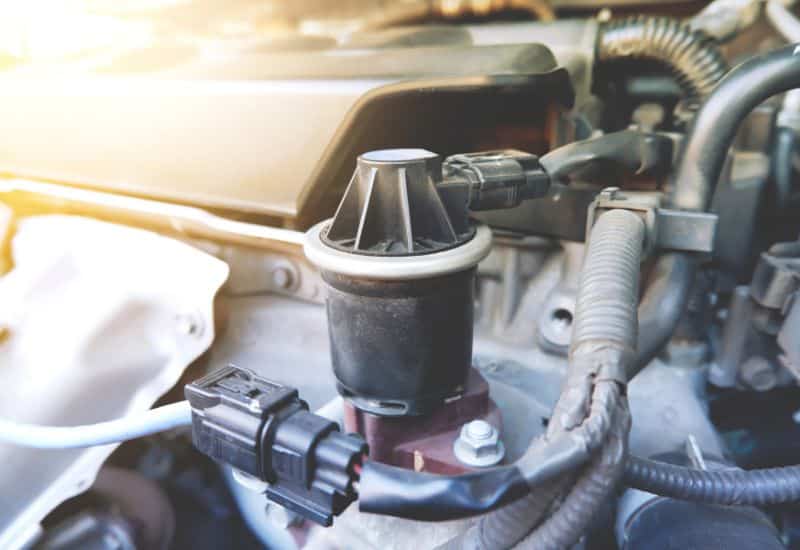
The Exhaust Gas Recirculation (EGR) valve removes a small volume of the exhaust and then sends it back into the combustion chamber to help to decrease the internal operating temperature. Since it’s primarily carbon dioxide which doesn’t combust, it helps maintain the temperature of the engine block.
Over time carbon deposits and soot can start to build up on the EGR valve. This process can be accelerated by dirty or low-quality fuel. As time goes on, these deposits can cause the EGR valve to become stuck wide open, allowing the exhaust gas to continue to flow unregulated. This affects the fuel/air ratio, which can cause your car to stall at idle.
If you notice any of the following signs, you should be suspicious of a bad EGR valve.
When the valve is stuck wide open, you’ll usually get a check engine light and/or an emissions control warning on the car’s instrument cluster.
It’s possible to clean an EGR valve yourself via the following steps.
The cost to have a mechanic clean a dirty EGR valve is around $100 to $150.
The cost to have a mechanic replace a bad EGR valve can be as much as $350 to $550.
4. Coking in the Throttle Body
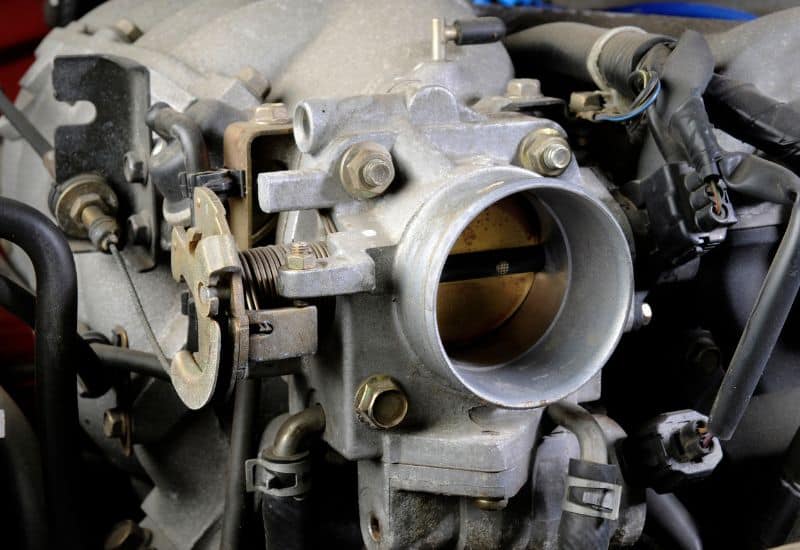
A car’s throttle body regulates the airflow going into the engine for the critical fuel/air mixture. Over time fuel residue and carbon deposits can start to build up inside the throttle body affecting its performance. This leads to increasing imbalances in the fuel/air mixture which can cause stalling problems while idling.
Coking in the throttle body usually starts as the car hesitates to start and stalls at idle. You might also notice:
Fortunately, coking in the throttle body is a relatively easy problem to fix with some throttle body cleaner and the following steps.
If the car is driving better but still has a rough idle or stalls at the lights, then coking in the throttle body was probably only one part of the problem. You might also have a fuel system fault or a faulty sensor that’s also affecting the car’s performance.
The cost to have a mechanic clean or replace a throttle body can range between $150 to $300.
5. A Clogged Fuel Filter or Fuel Pump
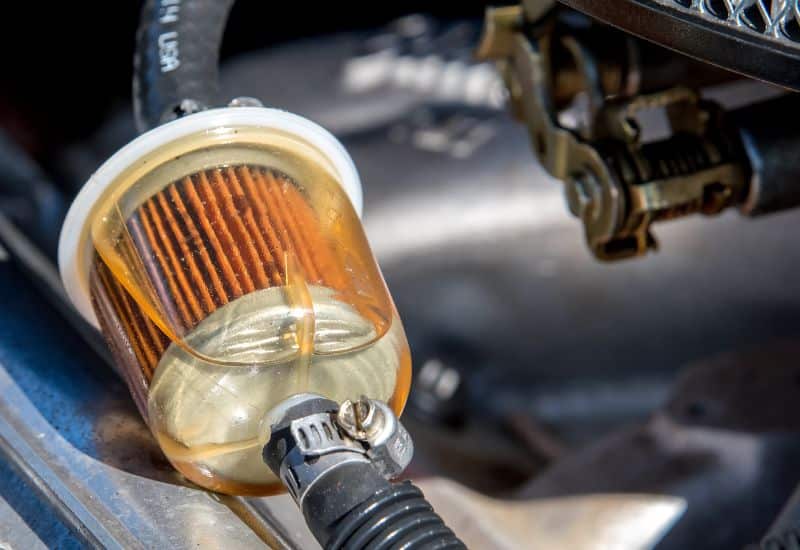
The average fuel filter should only be good for 30,000 to 45,000 miles. Suppose you procrastinate having the fuel filter replaced. In that case, excess deposits can build up, affecting the fuel system’s ability to deliver the proper amount of gasoline needed to maintain the proper fuel/air mixture. This can cause the partially starved engine to stall at idle.
Though the even larger worry here is that the clogged fuel filter has put excess strain on the car’s fuel pump, if you’ve been extremely lax about replacing the fuel filter, it could be that your fuel pump is dying, which could also cause engine stalling at idle.
Symptoms of a Clogged Fuel Filter
A failing or bad fuel pump will have a lot of the same symptoms as a clogged fuel filter. Though you might also notice a strange buzzing or humming sound coming from the area around the fuel tank. This is the pump straining before it finally fails.
You can easily replace your own fuel filter for the cost of the filter, which is between $15 to $70, depending on the make and model.
You can pay a mechanic or a fast oil change service to do it for you for $70 to $150. While you’re there, you might as well tack an oil change onto the bill.
6. A Fault in the Idle Air Control Valve
Your car’s idle air control valve works in tandem with the ECU to keep the engine in the correct RPM range when the car is idling. If there’s a defect in the valve or the actuator, the engine’s RPMs might become too low, causing the engine stalls when stopped or idling.
Most cars with an electric throttle body are integrated with the idle air control valve. So, it’s possible that one can affect the performance of the other.
Symptoms of a Bad Idle Air Control Valve
Sometimes you can clean the idle control air valve at the same time you clean the throttle body. You’re already there so it makes sense, and the process is very similar.
The cost to have a mechanic completely replace a bad idle control air valve can range from $120 to as much as $550.
7. A Problem with the Transmission’s Torque Converter

In an automatic transmission, the torque converter replicates a manual transmission’s clutch by delivering power from the engine to the car’s drivetrain. While it’s engineered to be robust, the torque converter can suffer long-term wear and tear. It can occasionally become locked up or impaired enough in performance that the car stalls while idling.
This can be a two-fold problem. If you’re lucky, it’s just the electromagnet solenoid that regulates the fluid pressure in the transmission. Though most mechanics will rightly tell you that even if it’s just the solenoid, the torque converter itself is wearing out. Since half or more of all transmission repair bills are labor, it’s probably wise to replace the torque converter entirely.
The cost to have a mechanic replace just the torque converter solenoid ranges from $250 to $550.
The cost to have a mechanic replace the torque converter ranges between $600 to $1,000.
How to Diagnose Why a Car Stalls at Idle
Different symptoms can help you make an educated guess on what’s causing your car to stall at idle. You’ll need to go a few steps further in the troubleshooting process to ensure you have a complete picture of what’s wrong.
This starts with connecting your OBD-II code scanner to see if the ECU is throwing any codes. This will help you understand if there’s a sensor problem or specific cylinders that might have fouled spark plugs. However, it won’t tell you anything specific about what’s going on in the transmission.
If you don’t have any obvious codes telling you while the car stalls at idle, you’ll have to move forward to look for some physical defects. Spraying a little starting fluid on the throttle body while the car is running might help you determine if there’s a fuel system problem. If the idle upticks when you spray it, and there are no direct sensor codes, it might be a fault in the fuel system.
You can use a fuel pressure gauge to check the fuel pressure. With most modern vehicles, you’ll get a reading of 40 to 50 PSI, though you should confirm with the repair guide to make sure you have adequate fuel pressure.
Next, you should check for spark using an inline spark tester. If the tester light up when you crank the engine, then you know it is receiving a spark. If it doesn’t, you’ll need to pull the spark plugs to look for signs of fouling.
Frequently Asked Questions
Can a Bad Alternator Cause My Car to Stall at Idle?
A bad alternator can cause your car to stall at idle. However, this means that the battery is completely flat and the alternator is not charging. So, if it is the alternator, you won’t be able to get the stalled car started again.
Do Copper Spark Plugs Have a Shorter Lifespan?
Copper spark plugs might only have an average lifespan of around 30,000 to 45,000 miles. If your car has them and frequently stalls at idle, it might be that they’ve come to the end of their life.
If possible, you might want to consider upgrading to iridium or platinum plugs which can have a lifespan of 75,000 to 100,000 miles. You should consider doing this anyway when you bring your car in for a tune-up.
Conclusion
A car that cuts off while idling is certainly frustrating and is often a sign of one or more faults in the engine or transmission. A code reader will help you dial in any sort of sensor or spark plug issues. You should be mindful of the throttle body, fuel system, and transmission problems.
A clogged fuel filter can lead to a lot of other component faults, which can cause a car to stall at idle. Not the least of which is fouled plugs or a failing fuel pump.
Air handling issues from sensors, coking in the throttle body, and problems with the EGR valve might still be within range of what you can fix on your own. Though transmission issues like a failing torque converter are best left to professional mechanics.

Written By
Jason Farrell
Jason Farrell is a certified master technician, the editor of Mechanic’s Diary in Pittsburgh, Pennsylvania. He is ASE (Automotive Service Excellence) certified and earned a Bachelor’s Degree in Automotive Technology from Pittsburg State University. With nearly 18 prior years of experience in the automotive field, he has extensive knowledge about Domestic, European, and other foreign makes and models of cars and light trucks. Jason’s experience working as a technician and service manager at dealerships, gave him the experience and know-how of most aspects of inspection, diagnosis, and repair from engine and drivability to electrical, HVAC, brakes, steering and suspension and everything in between.



